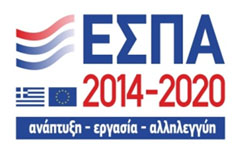Surgical Operations » Median nerve entrapment syndrome treatment
Surgical treatment of the median nerve entrapment syndrome is indicated in cases at stage II and III.
Classic technique for the median nerve decompression with incision of the transverse ligament Link στο σύνδρομο μέσου νεύρου
The first successful cut of the transverse carpal ligament with this classic technique was performed in 1941 by H. W. Woltman, in Chicago, USA. The first time this was performed in Greece was in 1976. This surgical operation is performed under local anesthesia in an operating room under aseptic and antiseptic conditions. The incision is 3–4 cm long and is done on the palm side of the wrist. This operation is recommended for locating and cutting the thick transverse carpal ligament. It lasts about 20–40 minutes and particular attention is required in order to prevent an accidental cut of the small motor and sensory branches of the median nerve. Results are impressive and symptoms subside immediately. Shorter incisions 1–2 cm long are unfortunately accompanied by incomplete decompression and some of the symptoms remaining. Sutures are removed on the 15th postoperative day and till then the wound remains covered with gauzes. Right after the operation or as soon as the postoperative pain allows it, the patient needs physical therapy for the hand. Complete recovery and use of the hand occur after the first postoperative month.
Modern endoscopic techniques with one or two incisions
Endoscopic techniques for the cut of the transverse carpal ligament of the wrist started to be performed in 2005.
In the technique of two holes, a metal guide is inserted between the two incisions and, with its assistance, the arthroscope navigates. Through the arthroscope, the cut of the transverse carpal ligament is performed.
In the technique of one hole, an incision 1 cm long is done in the forearm. The endoscope and special tools are inserted through this hole for the cut of the transverse carpal ligament.
Unfortunately, endoscopic techniques haven’t proven to be more effective than the classic ones. On the contrary, they appear to have more complications. The biggest advantage of them, however, against the open method is that it leaves no scars.
What are the complications of the median nerve surgical treatment?
The complications of the median nerve surgical treatment are as follows, regardless to the technique performed:
- Hematoma
- Surgical wound dehiscence
- Cut of the motor branch of the median nerve toward the thenar, which causes thenar muscles weakness and atrophy
- Incomplete cut of the transverse carpal ligament
- Neurinoma
- Median nerve injury
- Painful scar and creation of keloid








